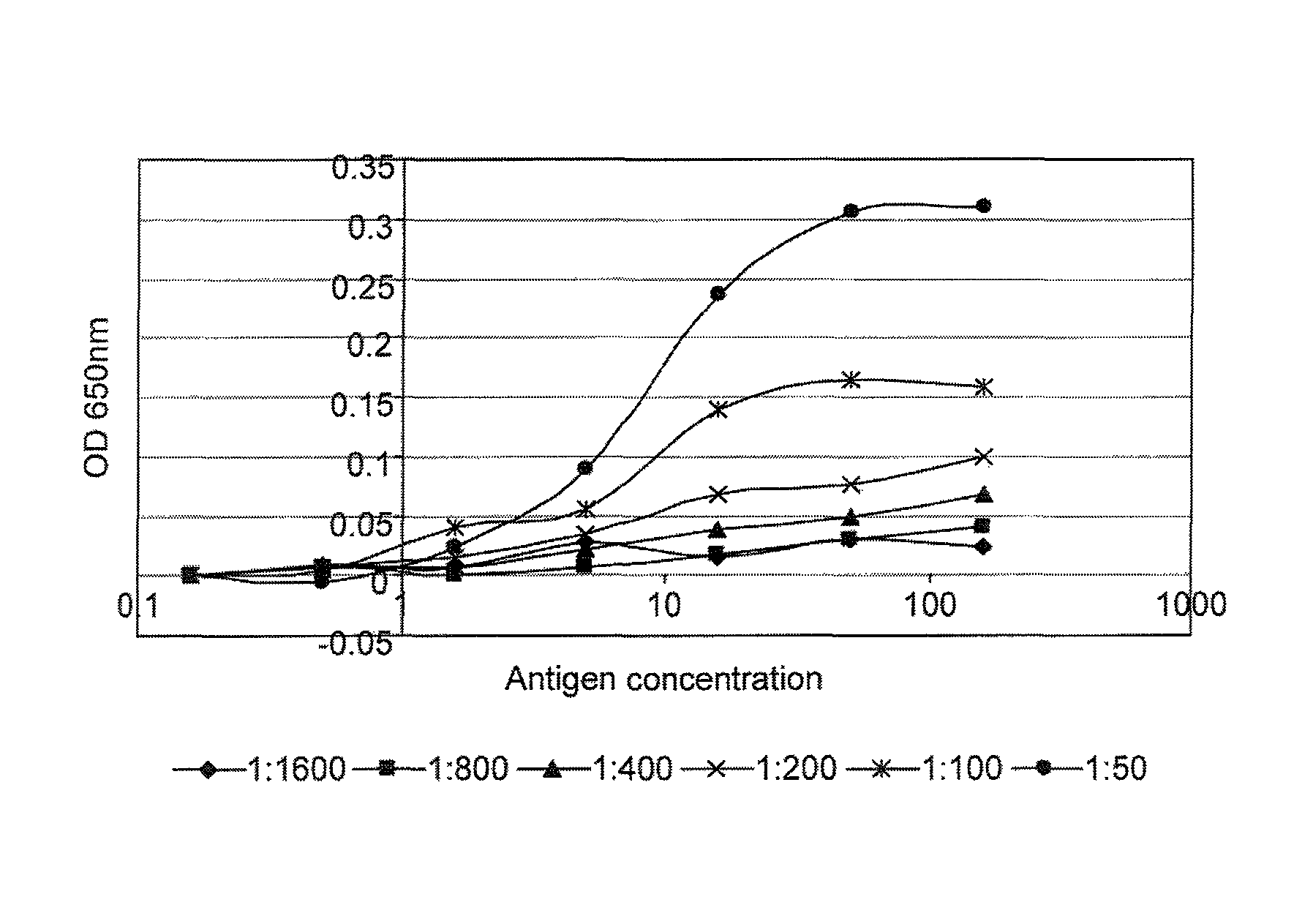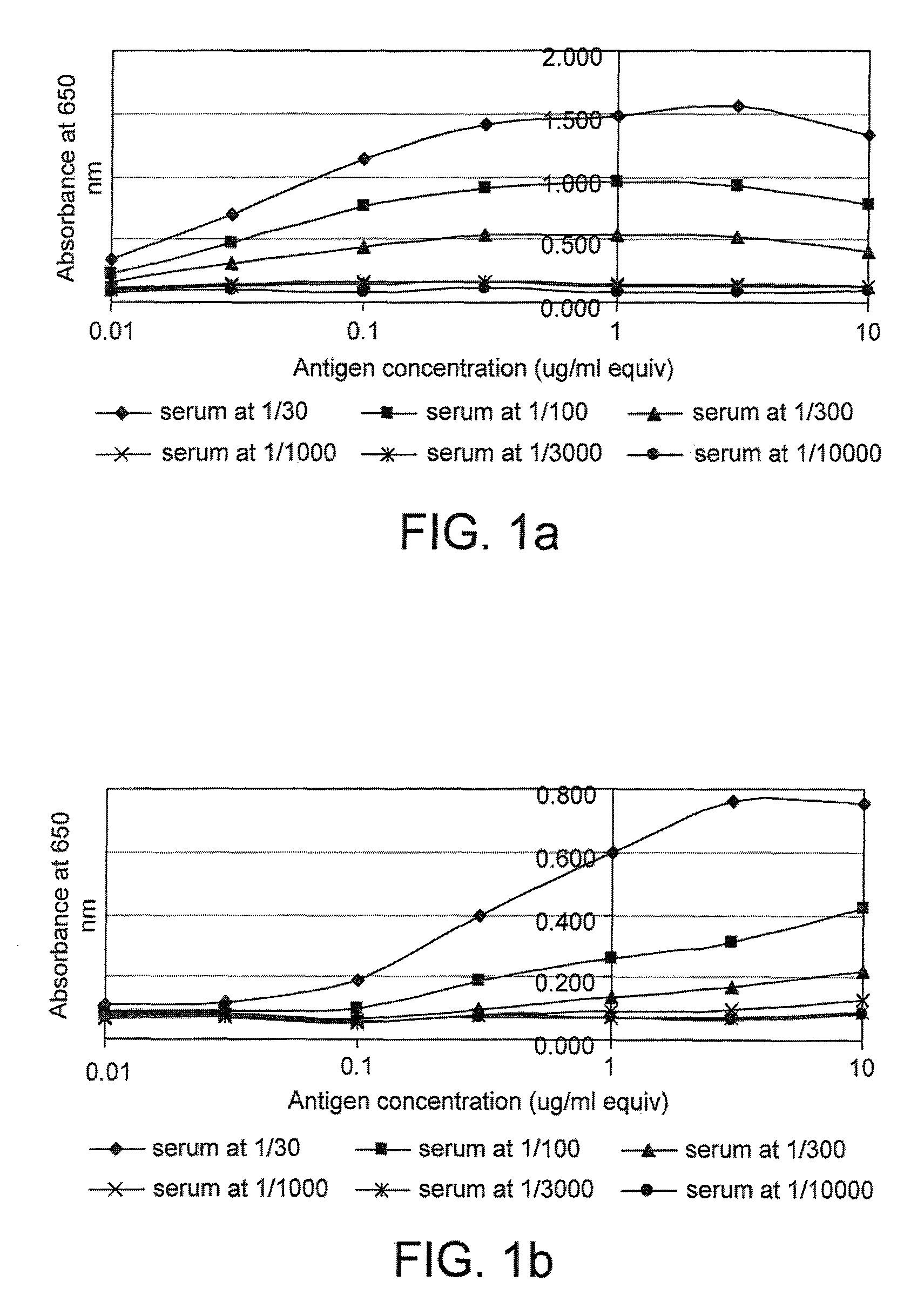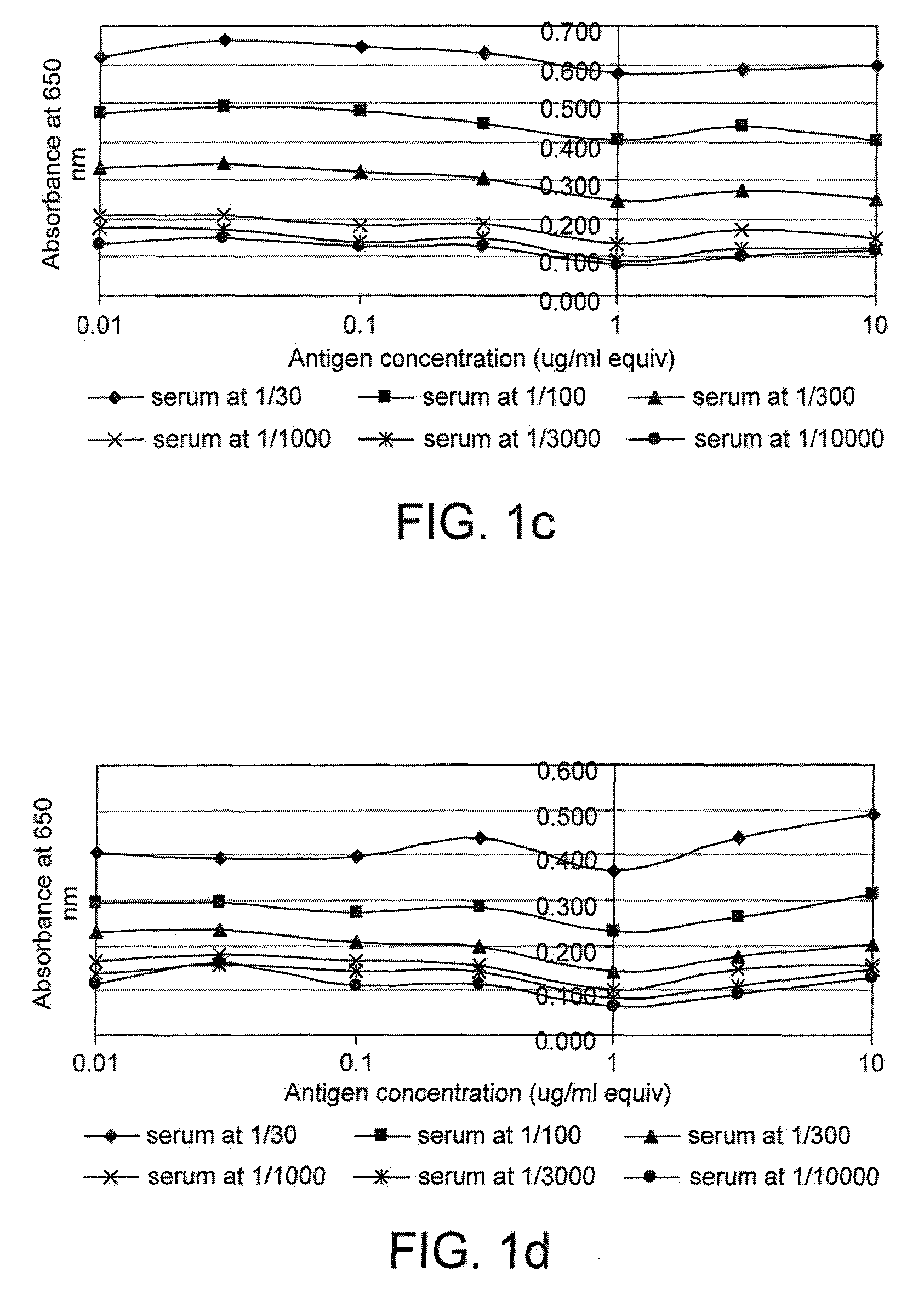Immunoassay methods
a technology of immunoassay and method, which is applied in the field of diagnostic or prognostic assays, can solve the problems of high false negative rate, difficulty in scoring true positive, and difficulty in devising a standardised assay methodology, so as to reduce the incidence of false positive and high sensitivity
- Summary
- Abstract
- Description
- Claims
- Application Information
AI Technical Summary
Benefits of technology
Problems solved by technology
Method used
Image
Examples
example 1
General Protocol for Optimal Serum and Antigen Concentration (OSAAC) Titration of Antigen in an Autoantibody Assay
[0194]Samples of tumour marker antigens may be prepared by recombinant expression, following analogous methods to those described in WO 99 / 58978.
[0195]Briefly, cDNAs encoding the marker antigens of interest were cloned into the pET21 vector (Invitrogen) which has been modified to encode a biotin tag and a 6xhistidine tag to aid in purification of the expressed protein. The resulting clones are grown in a suitable bacterial host cell (in inclusion bodies), the bacteria lysed and denatured and the expressed antigens recovered via Nickel chelate affinity columns (Hi-trap, commercially available from Amersham, following manufacturer's protocol). The expressed antigens were renatured by dialysis in appropriate buffer and the yield of expressed protein assessed by SDS-PAGE, western blot and ELISA and quantitated prior to storage. Unless otherwise stated, all antigens used in t...
example 2
Detection of Autoantibodies in Primary Breast Cancer
[0212]The following data were obtained from a pilot study to assess the sensitivity and reproducibility of a panel of cross titration autoantibody assays (OSAAC) in primary breast cancer (PBC). The study included serum from 14 women with no evidence of cancer and pre-operative serum samples from 14 women with primary breast cancer. Normal and cancer samples were age matched.
[0213]The assay was carried out according to the protocol given in example 1 using the antigens p53 and c-myc. Two normal samples (one for p53) had to be removed from the study because they demonstrated sustained and extremely high levels of autoantibody binding across a range of serum and antigen concentrations.
[0214]FIG. 1 gives examples of curves obtained when the cross titration assay was used to measure p53 and c-myc autoantibodies in serum. It can be seen that for some samples (e.g. samples 17179 and 18781), a range of titrations were obtained with the mos...
example 3
Analysis of the Sensitivity and Specificity of Cross Titration Assays Compared with Antigen Titration Alone
[0217]Autoantibody (AAb) measurements were performed on 14 women with primary breast cancer (PBC) using both a cross titration assay (OSAAC) and an antigen only titration method in which autoantibody measurements were only performed at a serum dilution of 1 / 100. Samples were deemed to be positive if they exceeded cut-off levels at both 10 and 3 μg / ml on an antigen titration curve. Table 2 below shows a direct comparison of the two methods:
[0218]
TABLE 3Comparison of the Antigen Titration method ofcalculating AAb sensitivities at only one serum dilutioncompared with OSAAC assay.AntigenAntigen titration methodOSAAC Assayp53sensitivity 5 / 14 (36%) 7 / 14 (50%)specificity13 / 14 (93%)13 / 14 (93%)c-mycsensitivity 3 / 14 (21%) 5 / 14 (36%)specificity12 / 14 (86%)12 / 14 (86%)
[0219]It can be seen that by using a series of antigen titration curves in which both antigen concentration and serum concent...
PUM
| Property | Measurement | Unit |
|---|---|---|
| concentrations | aaaaa | aaaaa |
| concentrations | aaaaa | aaaaa |
| concentration | aaaaa | aaaaa |
Abstract
Description
Claims
Application Information
 Login to View More
Login to View More - R&D
- Intellectual Property
- Life Sciences
- Materials
- Tech Scout
- Unparalleled Data Quality
- Higher Quality Content
- 60% Fewer Hallucinations
Browse by: Latest US Patents, China's latest patents, Technical Efficacy Thesaurus, Application Domain, Technology Topic, Popular Technical Reports.
© 2025 PatSnap. All rights reserved.Legal|Privacy policy|Modern Slavery Act Transparency Statement|Sitemap|About US| Contact US: help@patsnap.com



